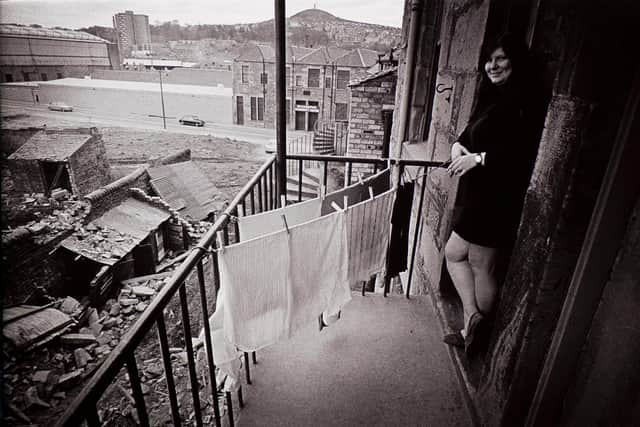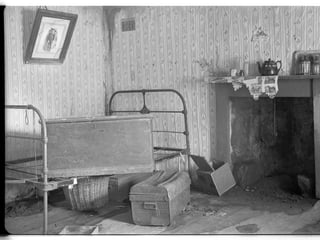A photographer's Love Letter to Dundee lingers long in the heart of a city


McKenzie relocated from London to take up the new post of head of photography at Duncan of Jordanstone School of Art. Immediately, he was captivated – poleaxed as he described it – by the “wonderful light and eroding urban texture” of a city in flux where vanishing Victorian landscapes gave way to bold expressions of the future.
Later, during his lunch hour, he documented the tearing down of crumbling tenements in Hawkhill, which sat just to the back of the art college. He found residents going about their day in swirls of demolition dust and women looking out from their balconies as their washing lines hold firm against their disappearing neighbourhoods.
Advertisement
Hide AdAdvertisement
Hide Ad

McKenzie lamented the losses in his work but amongst the rubble he found warmth and truth and it is this that is reflected in a A Love Letter to Dundee, a major new exhibition of his work at the McManus Art Gallery and Museum.
Anna Robertson, Manager of Fine and Applied Art, said: “Joe said when he arrived, he was told "nobody loves Dundee." His images indicate that simply wasn't true, though as ever, it took an outsider to reflect the very best of the city back to its citizens.”
Around 150 of his works are on show, including those from Dundee, a City in Transition, which grew out of a commission to photograph the building of the Tay Road Bridge.
He was given access all areas to photograph this super structure in-the-making with his ability to get in about his subjects becoming a hallmark of his work.


Ms Robertson said: “McKenzie had an ability to get behind normally closed doors, scale incredible heights, capture fleeting moments and in the stillness of early morning catch the City off guard. It is difficult to envisage a similar project being undertaken in quite the same way today.
She added: "McKenzie didn’t take notes or record locations. He chatted to his sitters – asking their permission to be photographed – but didn’t find out their names, or much about their lives.”
But it is clear his sitters opened to McKenzie. From the young, modern couple proud and close on their motorbike to Mrs Wallace in her neat pie shop, his subjects appear to have enjoyed being shot by the photographer.
The city is now filling in the details of those who McKenzie captured and then left behind in that deft manoeuvre of the photographer.
Advertisement
Hide AdAdvertisement
Hide Ad

Ms Robertson said: “We have found that visitors have a strong emotional response to the photographs. In many cases, they capture a generation that did not take many photographs of themselves.
"We have many instances in recent weeks of people getting in touch to identify a family member or friend. In one instance, the image turns out to be the only known photograph of a much-loved father and grandfather. In another, the images record a family member who can no longer describe their working life and so provide a precious record for their family of a part of their life that they regret not asking more about.”
McKenzie’s work, it would appear, is as important now as it ever was.
A message from the Editor:


